Dark alleys wound between wooden houses with lanterns hanging outside, no doubt tea houses where geiko, the famous geisha of Miyako, entertained. Women in exquisite kimonos clattered by on high clogs, long sleeves swinging. Atsu listened for the tinkle of a shamisen plucking out a plaintive melody. She caught the scent of incense on the breeze …
The Shogun’s Queen
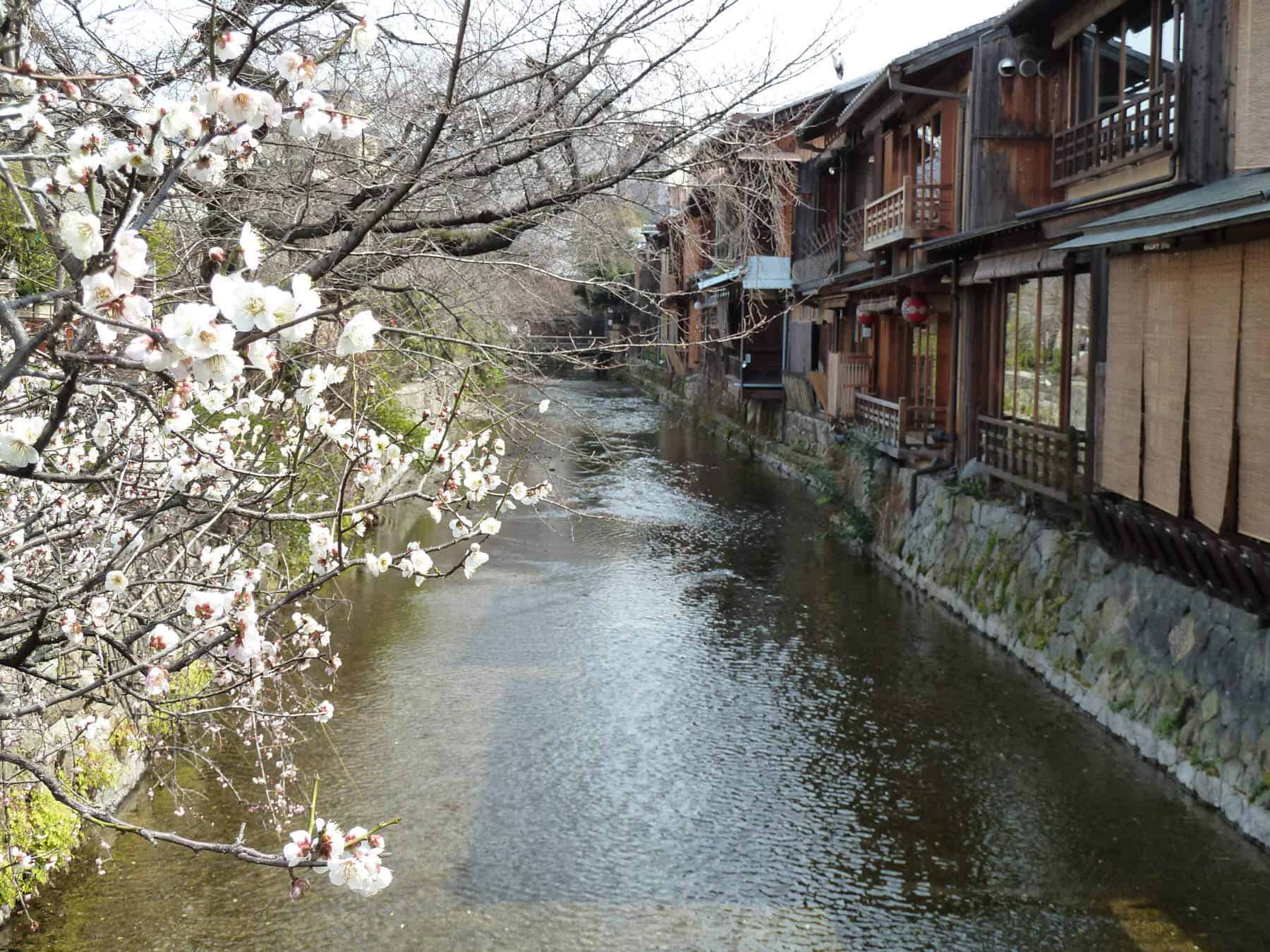
Travelling by palanquin on a long journey right across Japan, Princess Atsu, the heroine of The Shogun’s Queen, is full of excitement when she realises she is to visit Kyoto. The ancient capital, in her day it was a beautiful city of temples and palaces right at the heart of the country. Poets wrote of its beauty and called it the City of Crystal Streams and Purple Hills. It was famous then and is famous now as the city of geisha.
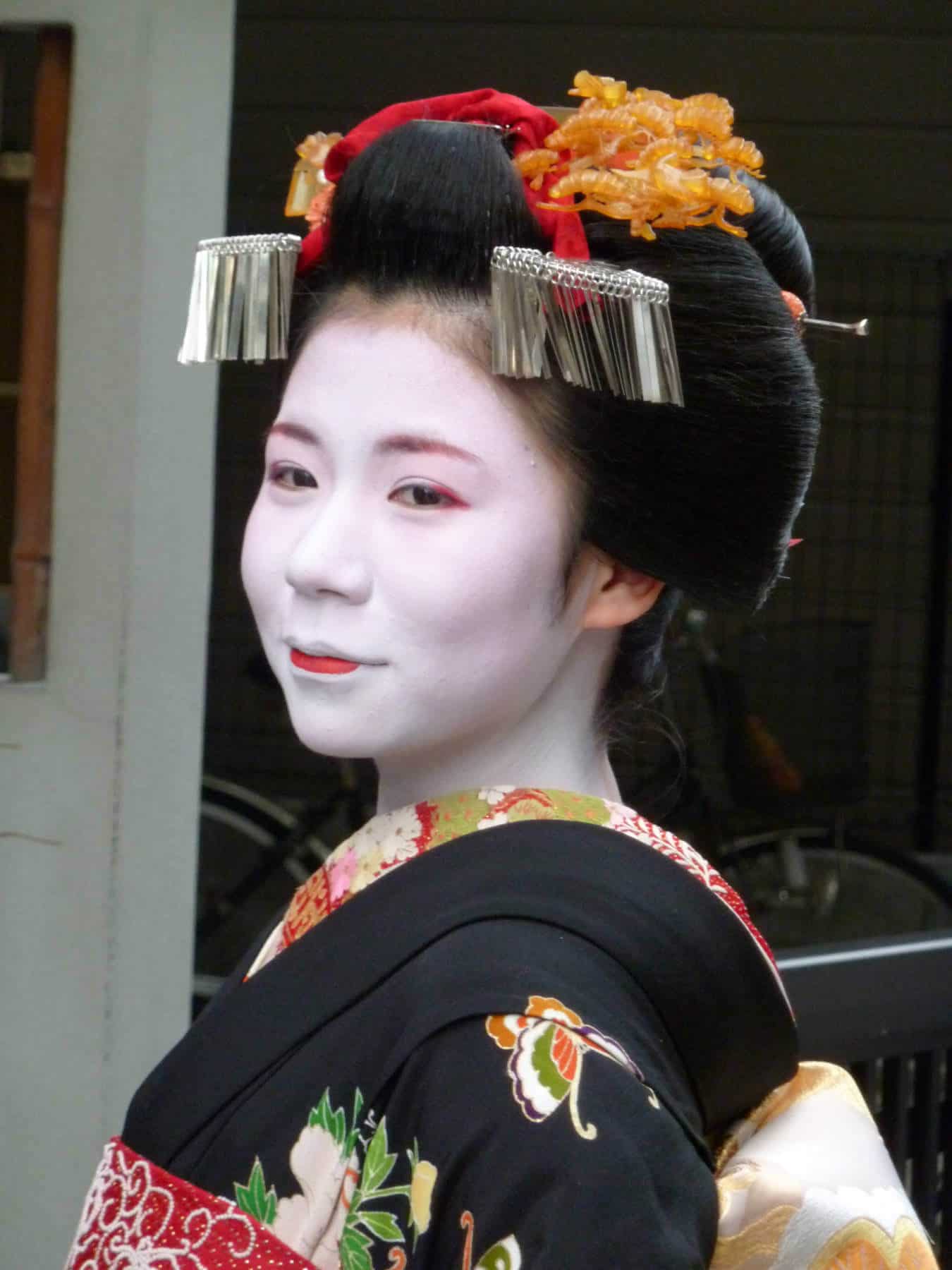
I didn’t need to do any further research to write about Kyoto and its geisha. Ten years ago I lived there for months, researching a book I wrote on geisha, and I still go back regularly to visit my geisha friends.
I always stay in the same place – a small inn that was once a geisha house. My upstairs room there has only three walls. The fourth is a row of sliding glass doors which do a very poor job of keeping out the cold in winter and the heat in summer. You can hear every noise from the street outside. The doors open onto a narrow balcony where I stand and look down at the maiko clip clattering by on their high wooden clogs, chattering and laughing.
Maiko are apprentice geisha. Underneath all the paint and gorgeous costumes they are just teenagers, fifteen or sixteen years old. But they are magical creatures. They wear their hair stretched and oiled and back-combed into two stiff wings by the local hairdresser, who tucks in wads of yak’s hair to give extra volume. In the evening they paint their faces with thick white make up painted not up to the hairline but in a perfect oval and they shimmer magically in the dark. They dab just the middle of their bottom lip with a petal of bright red, to give their mouths a pouting, bee stung look. They wear brilliant long-sleeved kimonos with bells that tinkle as they walk and a stiff obi (sash) tied into a huge bow at the back with the ends hanging nearly to the ground. They’re walking works of art.
Even at fifteen or sixteen these young girls are graceful, self-assured and confident. Once I was walking down the narrow street lined with dark wooden houses with paper lanterns hanging outside. It was beginning to rain and I’d forgotten my umbrella. Tomoko, a sixteen-year-old maiko from a country town, ran over and walked beside me, holding her oiled paper umbrella over my head to make sure I didn’t get wet.
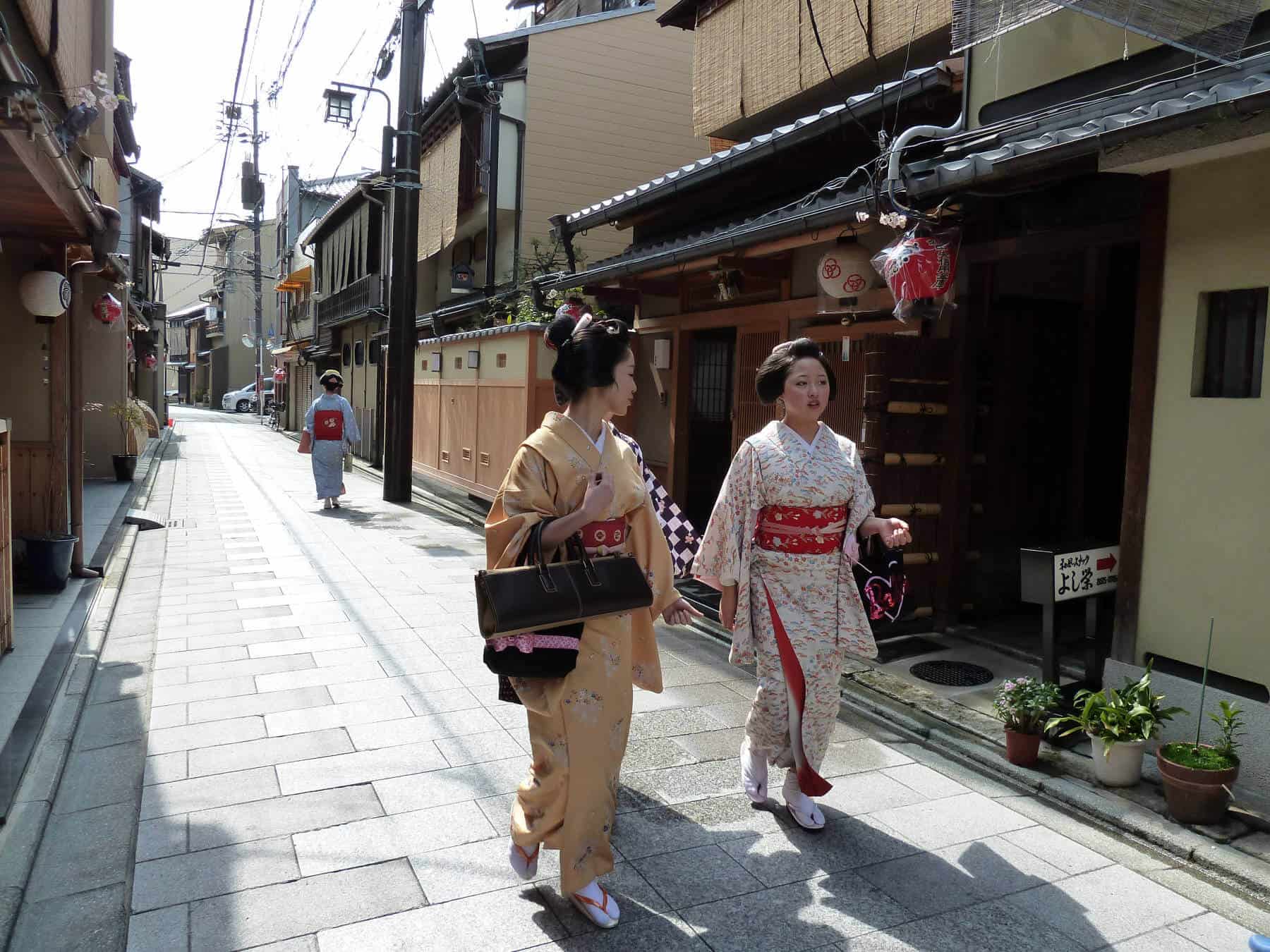
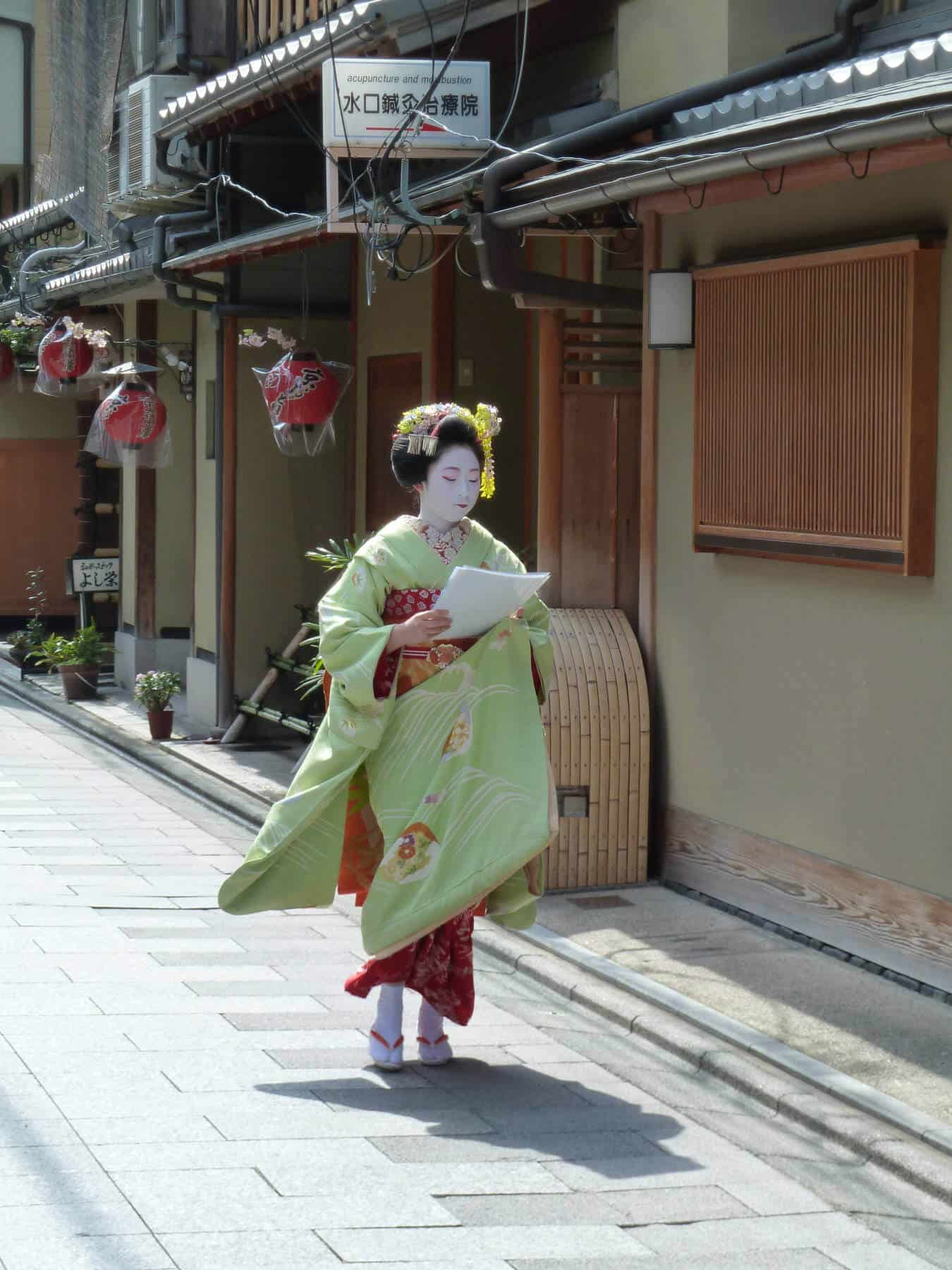
Later she showed me the room she shared with another maiko in the geisha house where she lived. She had a hard wooden pillow to stop her hair being mussed and photographs of film stars and pop stars tucked along the mirror. A famous Japanese pop star had come to Kyoto and she’d been chosen to sit next to him, pour his drink and chat to him. Tomoko was a not particularly well-educated country girl but as a maiko she was able to mix with the richest, most powerful men in the country.
People often ask me what geisha do. The word ‘geisha’ means ‘artiste’. Geisha are professional dancers and singers who practice the traditional Japanese arts of music, dance and theatre. They are always practicing, always attending classes, always eager to refine and perfect their art. They are also skilled at the art of conversation, at keeping conversation light and entertaining. They are the perfect hostesses, in fact.
They are also rather good at flirting which, certainly in old Japan at least, was the preserve of professionals. Well behaved respectable ladies didn’t flirt. But only the most foolish man forgets for a second that geisha tell ALL the men how handsome they are and how much they love them. They are actresses, playing a part. The chance of actually going home with a geisha is very slim indeed.
In the end I collected my experiences into a book about geisha and went on to write many more books about the extraordinary world of the women of old Japan. The most recent, The Shogun’s Queen, is set largely in the vast harem in Edo Castle – a place where three thousand women lived and only one man, the shogun, could enter. But that’s another story.
A version of this article was first published in Lauren Anderson’s asthepageturnsreviews.wordpress.com.
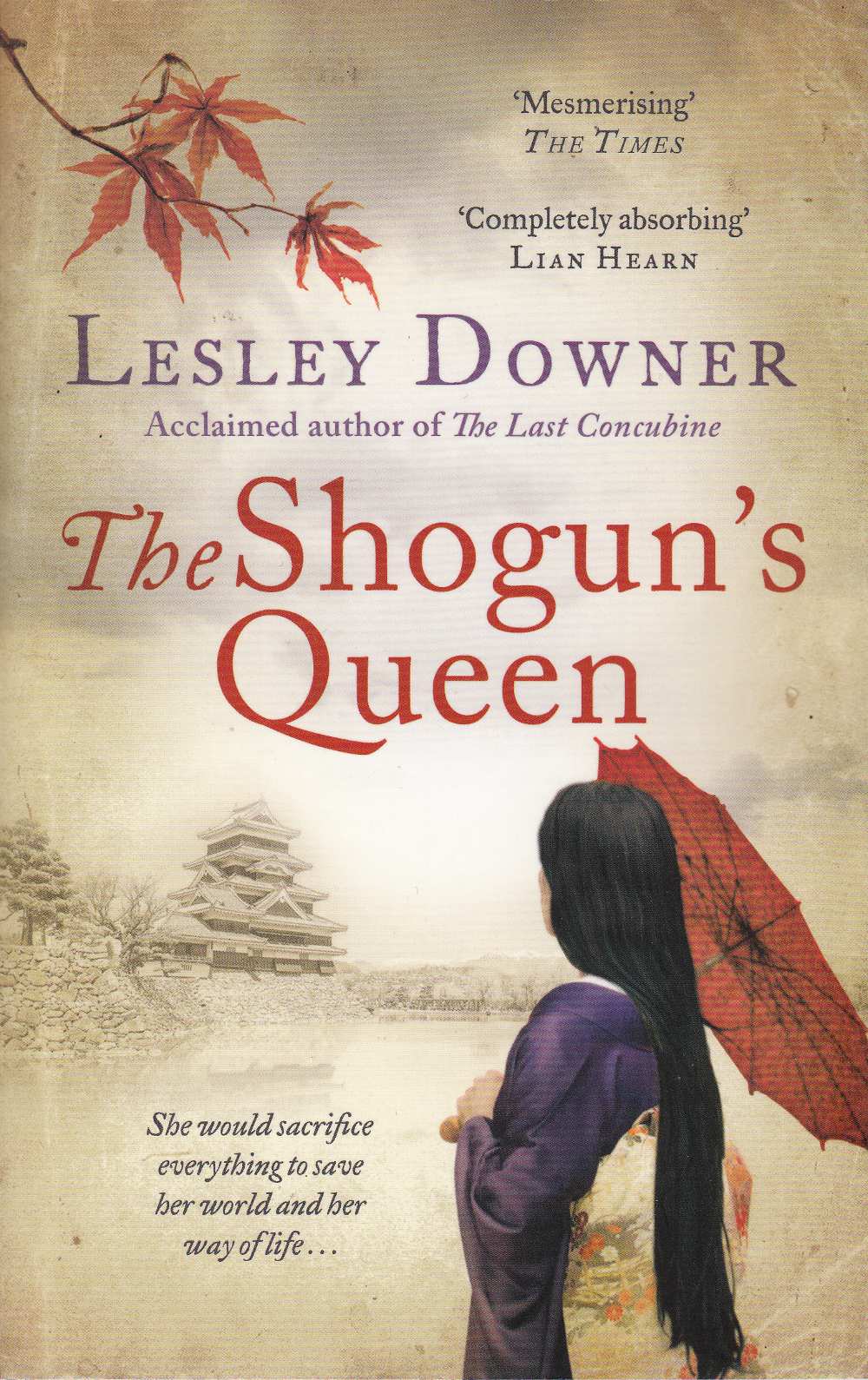
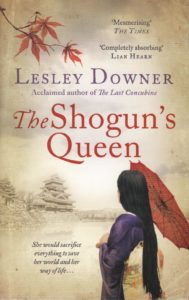
Thanks, Lesley. I visited Japan last year and had an excellent tour in Kyoto that took us behind the main streets and really gave us an insight to the world of the geisha. I think that was one of the reasons I enjoyed your book so much.